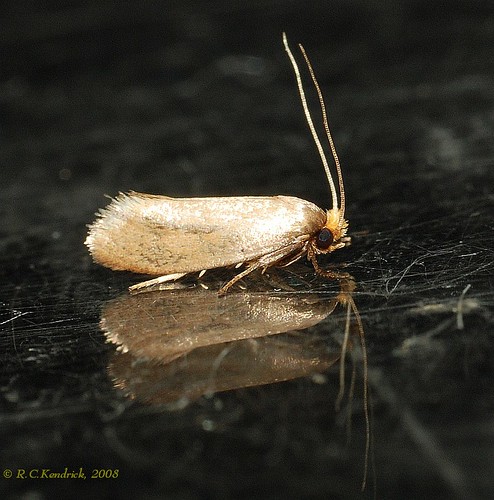 Systematics and Biodiversity (2008), 6:319-384 Cambridge University Press
Systematics and Biodiversity (2008), 6:319-384 Cambridge University Pressdoi:10.1017/S1477200008002685
Hidden diversity in small brown moths – the systematics of Edosa (Lepidoptera: Tineidae) in Sundaland
Gaden S. Robinsona1 c1
Department of Entomology, The Natural History Museum, Cromwell Road, London SW7 5BD, UK
Department of Entomology, The Natural History Museum, Cromwell Road, London SW7 5BD, UK
Abstract
This paper is an account of the species of Edosa (Perissomasticinae) inhabiting Sundaland, the area of South-East Asia that comprises the Malay Peninsula, Sumatra, Java, Bali, Borneo, Palawan and Balabac. Edosa is highly diverse; its members are mostly small to medium-sized brown moths with a characteristic resting posture. They run rapidly with a lurching, scuttling gait, and are commonly encountered in light-collecting throughout the region, but their biology is otherwise unknown. The genus is redefined and its previous taxonomic history and its biological and morphological characteristics are reviewed. Fifty-two species are described, illustrated and keyed; 45 species are new, and one of the seven previously known species, Edosa trita Meyrick, is treated as incertae sedis. The impossibility of associating male and female of the same species (except in a few instances) has necessitated a taxonomy based upon males; females are only described formally where they can be confidently identified, and that applies to very few species. The genitalia of a few tentatively identified females are illustrated also to give some idea of morphological variation. A phylogenetic analysis including representatives of all perissomasticine genera indicates that Neoepiscardia, Cylicobathra and Phalloscardia are groups subordinate within a monophyletic Edosa with which they are here synonymised. Edosa is diagnosed by the male and female genital structure: in the male the uncus has a broad, shouldered base and the bulbus ejaculatorius has a sharp bend at about one-half its length, with the distal region abruptly differentiated into a ‘cup’ which is reflexed caudally back onto the preceding length of the bulbus; females have a complex colliculum consisting of transverse or oblique rings or flanges which are invaginated in many species to form an elongate digitate internal process or pair of processes. It is suggested that, with some 250 species recognised of which 160 are described, Edosa is the most species-rich genus of the Tineidae.
This paper is an account of the species of Edosa (Perissomasticinae) inhabiting Sundaland, the area of South-East Asia that comprises the Malay Peninsula, Sumatra, Java, Bali, Borneo, Palawan and Balabac. Edosa is highly diverse; its members are mostly small to medium-sized brown moths with a characteristic resting posture. They run rapidly with a lurching, scuttling gait, and are commonly encountered in light-collecting throughout the region, but their biology is otherwise unknown. The genus is redefined and its previous taxonomic history and its biological and morphological characteristics are reviewed. Fifty-two species are described, illustrated and keyed; 45 species are new, and one of the seven previously known species, Edosa trita Meyrick, is treated as incertae sedis. The impossibility of associating male and female of the same species (except in a few instances) has necessitated a taxonomy based upon males; females are only described formally where they can be confidently identified, and that applies to very few species. The genitalia of a few tentatively identified females are illustrated also to give some idea of morphological variation. A phylogenetic analysis including representatives of all perissomasticine genera indicates that Neoepiscardia, Cylicobathra and Phalloscardia are groups subordinate within a monophyletic Edosa with which they are here synonymised. Edosa is diagnosed by the male and female genital structure: in the male the uncus has a broad, shouldered base and the bulbus ejaculatorius has a sharp bend at about one-half its length, with the distal region abruptly differentiated into a ‘cup’ which is reflexed caudally back onto the preceding length of the bulbus; females have a complex colliculum consisting of transverse or oblique rings or flanges which are invaginated in many species to form an elongate digitate internal process or pair of processes. It is suggested that, with some 250 species recognised of which 160 are described, Edosa is the most species-rich genus of the Tineidae.
Photo credit: RC Kendrick

沒有留言:
張貼留言